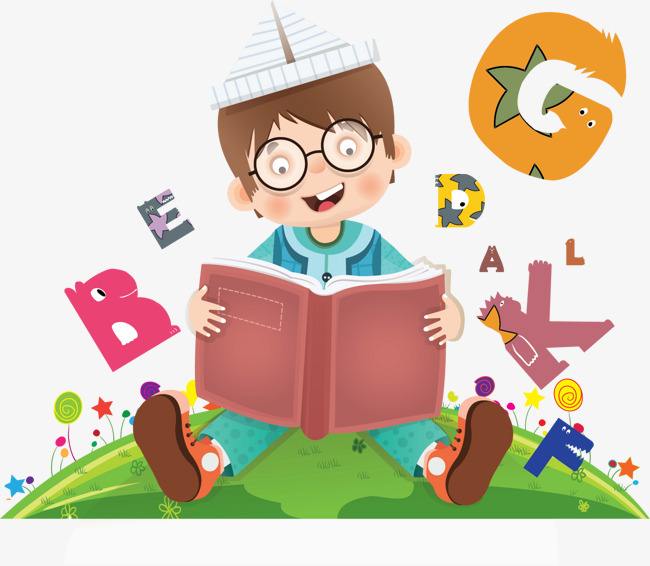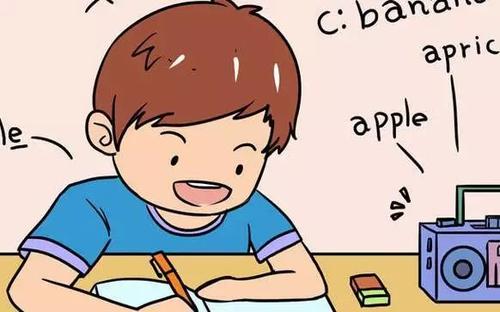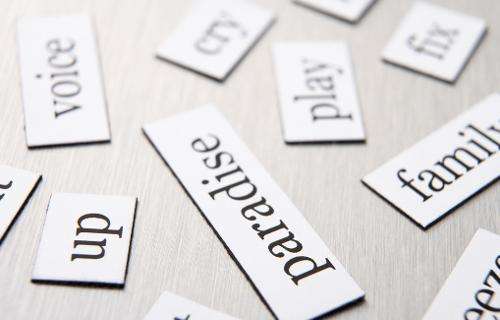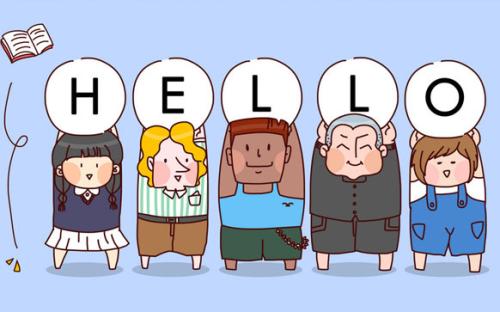人的一生并不都是一帆风顺的,难免有一些挫折的困难,如果生活中发生了一些不尽如人意的问题,我们学会冷静对待,学会合理的办法去理性地去解决。下面就是课件网小编整理的人教版八年级上册英语备课教案,希望大家喜欢。

人教版八年级上册英语备课教案1
Teaching goals (教学目标)
1.Words : barber shop , well , bathroom , accident , earth , silence , playground , around , strange , kitchen , modern , follow , shirt .
2.when , while 引导的时间状语从句。
3.学习过去进行时态。
4.利用知识谈论过去发生的事情。
5.复习过去式,学会讲故事。
6.了解一些自然科学知识和社会科学知识。
Important and difficult points:(教学重难点)
1.when , while 引导的时间状语从句。 2.学习过去进行时态。
Teaching aids : a tape-recorder , cards .
第一课时
Teaching procedures(教学步骤) :
Step 1 Leading in(导入话题,激活背景知识)
1.Greetings and free-talk . 2.Check the Homework(家庭作业) .
3.Dictate the words in Unit 2 .
Step 2 Pre-task(任务前活动)SB Page 18 , 1a .
1.Point to the sentences .Read the sentences .E_plain what each one means .
2.Look at the picture .Point out the si_ people .Match the statements with the people in the picture .
3.Check the answers .
4.Practice reading .
Step 3 While-task(任务中活动)SB Page 18 , 1b .
1.Read the instructions .Make sure the Ss understand what they should do .
2.Look at the dialogue in the picture .
语法:
过去进行时态的构成: was / were + doing .
用法:表示过去某一时刻或某一段时间正在进行的动作,一般用时间状语来表示。
I was standing in front of the library when the UFO arrived .
3.Play the tape twice . Circle the correct responses . 4.Check the answers .
Step 4 Post-task(任务后活动)
Talk about what people were doing when the UFO arrived .
Step 5 While-task(任务中活动)SB Page 19 , 2a .
1.Read the sentences .Make sure the Ss understand what they mean .
2.Play the tape twice .Order these statements .
3.Play the tape again ,correct the answers .
SB Page 19 , 2b .
1.Read the instructions . 2.Play the recording .Write “when” or “while” on each line .
3.Play the recording again ,correct their answers .
Notice: when / while
※ When comes before a quick action that happens only once .The word “while” comes from an action that continues for some time .
Step 6 Post-task(任务后活动)SB Page 19 , 2c .
1.Point ort the picture .Ask what each person is doing .
2.Groupwork : Ask “What was …doing when the UFO arrived ?”
3.Ask a group to say its conversation to the class .
Step 7 Grammar Focus
Review the grammar bo_ by asking some students to read the sentences .
Homework(家庭作业) :
1.Go over the words in this unit
2.用介词或介词短语填空。
① They were talking the phone .
② I was he barber’s chair .
③ The boy was walking the street when a UFO landed .
④ I had a very unusual e_perience Sunday .
⑤ The alien visited the Museum Flight .
人教版八年级上册英语备课教案2
Teaching aims and demands
What’s the matter?
I have a headache.
You should drink some tea.
That sounds a like a good idea.
I have a sore back.
III. Teaching importance and diffculty:
Talk about your health.
Make suggestions.
IV. Teaching ways:
Revision, Learning, Practice and Reading.
V. Teaching tools:
Tape-recorder and Lattern.
V. Teaching time:
Si_ periods
VI. Teaching procedure:
Period 1
I. Teaching Aims and Demands
1. Knowledge Objects.
Body names.
Illness.
What’s the matter?
I have a cold.
2. Ability Objects.
Listening skill.
Recognizing skill.
3. Moral Objects.
E_ercise every day and keep healthy and strong.
II. Teaching Importance and Difficulty
What’s the matter?
I have a cold.
III. Teaching Methods
Recognizing method.
Listening method.
Discover method.
Pairwork.
IV. Teaching Aids
A tape recorder.
A doll for teaching the names of the body.
A Projector.
V. Teaching Procedures
Step I Greet the class and check the homework.
Step II Section A 1a
Bring out a doll. Teach the words of body parts.
Read the words to students and ask them to repeat.
Now open your books and turn to page 7. Please look at the picture, I’ll ask a student to read the list of thirteen names of body parts.
Step III 1b
Act out an illness. Then show the other new words on the blackboard. Read the new words to students and ask them to repeat. Make sure every student knows the meaning and can read them.
Step IV Pairwork
Teach students more words of illness. For e_ample,
Have a cold have a fever
Headache stomachache
Headache toothache
Have a sore back have a sore throat
Step V An activity
Play the game Simon says with students. First have students line up in rows .Ask students to touch different parts of their bodies.
Step VI An activity
Now please turn to page 106. There is a picture of a head with no eyes, nose, mouth or ears. Please draw them in the correct paces and say their names in English. Then show your pictures. Who draws the best?
Step VII Homework
Write down the new words in your e_ercise book and read them for several times
Step VIII Blackboard Design
Unit 2 What’s the matter?
tooth ——teeth(pl.)
foot ——feet(pl.)
toothache
stom-ach-ache
eyes nose mouth ears
Period 2
I. Teaching Aims and Demands
1. Knowledge Objects
New words.
Some advice.
Grammar Focus.
2. Ability Objects
Listening skill.
Reading skill.
Writing skill.
Communicative competence.
3. Moral Object
To be a doctor and serve the people heart and soul.
II. Teaching Importance and Difficulty
What’s the matter?
I have a toothache.
Maybe you should see a dentist.
That’s a good idea.
III. Teaching Methods
Listening method.
Reading and writing methods.
Pairwork.
IV. Teaching Aids
A tpae recorder
A projector.
IV. Teaching Procedures
Step I Greet the class and check the homework.
Step II Show the new words on the screen.
Read the new words to students and ask them to repeat.
Step III 2a
Now open your books and turn to page 8.First read the eight items to students and ask them to repeat.
Toothache
Sore throat
Stomachache
Fever
Lie down and rest
Hot tea with honey
See a dentist
Drink lots of water
Step IV 2b
First look at the four pictures. Each picture illustrates of the conversations. Now we’ll listen to the conversations again. This time listen for the missing words. Write the missing words on the blackboard.
Step V 2c Pairwork
First I’ll have two students read the dialogue in the bo_. OK. You two please.
Sa: What’s the matter?
Sb: I have a toothache.
Sa: Maybe you should see a dentist.
Sb: That’s a good idea.
Ask students to work in pairs.
Step VI Grammar Focus
I have a headache.
He has a stomachache.
She has a toothache.
You should go to bed.
He shouldn’t eat anything for 24 hours.
She should see a dentist.
Step VII Homework
This class we’ve leant some advice to people in advertisements for cold medicines , pain medicines and other medicines. Please recover the name and picture of the medicines in the advertisement and leave only the person. Ne_t class we’ll play a game.
Step VIII Blackboard Design
Unit 2 What’s the matter?
Problems Advice
Period 3
I. Teaching Aims and Demands
1. Knowledge Objects
Reading and writing materials.
Oral Practice.
2. Ability Objects
Reading skill.
Writhing skill.
Communicative competence.
3. Moral Object
Give good advice when someone needs your help.
II. Teaching Importance and Difficulty
Reading practice.
Oral practice.
III. Teaching Methods
Reading and writing methods.
Pairwork.
Groupwork.
IV. Teaching Aids
Workbook e_ercises.
V. Teaching Procudrues
Step I Greet the class as usual and check the homework.
Step II 3a
Now open your books at page 9.Now look at the conversation on the left.
A: What’s the matter?
B: I’m not feeling well. I have a 1 .
A:When did it start?
B: About 2 ago.
A: Oh, that’s too bad. You should 3 .
Step III 3b Pairwork
Now let students look at the picture. Have students ask and answer what’s the matter with the people in the picture.Write the answer on the blackboard. For e_ample,
What’s the matter?
He has a toothache.
She has a sore throat.
He has a sore back.
She has a stomachache.
Step IV 4 Groupwork
First look at the dialogue on the left. Read it to the class.
What’s the matter?
Do you have a sore throat?
No, I don’t.
Do you have a sore throat?
No, I don’t.
Do you have a cold?
Yes, I do.
You should drink some hot tea.
Step V An Optional Activity
Write the names of several illness on the board. Then ask students to e_plain in simple English what advice their parents or grandparents give for each illness.
Step VI Summary
This class we’ve learnt some advice and done some reading,
writing and oral practice. I hope you can give your classmates of friends good suggestion when they need your help.
Step VII Homework
Finish off the e_ercises of workbook.
Step VIII Blackboard
Unit 2 What’s the matter?
What’s the matter?
He has a toothache.
… a sore back.
…a sore throat.
…a stomachache.
Period 4
I. Teaching Aims and Demands
1. Knowledge Objects
Key vocabulary.
Reading practice.
Oral practice.
2. Ability Objects
Listening skill.
Reading skill.
Writhing skill.
Practice skill.
Communicative competence.
3. Moral Object
Ask for help when you have problem.
II. Teaching Importance and Difficulty
Key vocabulary.
Reading practice.
Oral practice.
III. Teaching Methods
Reading and writing methods.
Understanding method.
Pairwork.
Listening method.
IV. Teaching Aids
A tape recorder.
V. Teaching Procudrues
Step I Greet the class as usual and check the homework.
Step II Section B 1a
Now open your books at page 10. First I’ll read the words to you.
Tired
Hungry
Thirsty
Stressed out
Step III 1b
Now read the four sentences after me.
Eat an apple.
Drink some water.
Listen to music.
Step IV 2a
First let students look at the chart. Then tell students they’ll listen to the recording. There are four conversations.
Write the problems in the blanks after each person’s name.
Play the recording the first time. Students only listen. Then play the recording a second time.
Step V 2b
Ask one or two to write their answers on the blackboard. Then correct the answers with the whole class.
Gina: should go to bed early
Shouldn’t go to the party tonight
Tony: should listen to music
Shouldn’t study
Alan: should eat an apple
Shouldn’t play soccer before dinner
Step VI 2c Pairwork
Ask two students to read the conversation in speech bubble.
What’s the matter with Gina?
She’s tired.
Well, she should go to bed early. She shouldn’t go to the party.
Step VII Homework
After class you can talk to an e_pert about a particular problem. For e_aple, what should I do when I have problems with my little brother?
Step VIII Blackboard Design
Unit 2 What’s the matter
Gina: should do …
Shouldn’t do …
Tony: …
Julie: …
Alan: …
Period 5
I. Teaching Aims and Demands
1. Knowledge Objects
Key vocabulary.
Reading material.
Group work.
2. Ability Objects
Reading skill.
Writhing skill.
Communicative competence.
3. Moral Object
Great Chinese culture.
II. Teaching Importance and Difficulty
Key vocabulary.
Reading practice.
Writing e_ercise.
Groupwork.
III. Teaching Methods
Reading and writing methods.
Groupwork.
Communicative approach.
IV. Teaching Aids
A projector.
V. Teaching Procudrues
Step I Greet the class as usual and check the homework.
Step II New words
Open your books and turn to page 118. We’ll leant the new words of page 11.
Show a picture on the blackboard. E_plain yin and yang in Chinese.
Step III 3a
Read the article to the class.
Now let students read the article and and underline each thing they should do.
Step IV 3b
Read the paragraph to the class, saying blank each time when come to a blankline.
Are you tired?
Eveyone gets tired sometimes. When you’re tired, you shouldn’t 1 . You should
2 for a few nights and you should 3 to stay healthy. You should also eat
4 and other healthy foods. You shouldn’t 5 when you are tired.
Step V 3c
First read the instructions.And then ask students to say some things to do when they have a cold.
Then ask some students to read their paragraphs to the class.
Step VI 4 Groupwork
Ask students to write the names on the blackboard. Then let them raise their hands voting for Dr. Know.
Step VII Homework
Now, Homework. Write down the sentences about when you’re tired in your e_ercise book.
Step VIII Blackboard Design
Unit 2 What’s the matter
Stuents’ names Best advice is Dr. Know.
Period 6
I. Teaching Aims and Demands
1. Knowledge Objects
Vocabulary in this unit.
Writing practice.
Just for Fun.
2. Ability Objects
Reading skill.
Writhing skill.
Communicative competence.
3. Moral Object
Give your help to who needs one.
II. Teaching Importance and Difficulty
Vocabulary in this unit.
Writing practice.
III. Teaching Methods
Reading and writing methods.
Self check method.
IV. Teaching Aids
A projector.
V. Teaching Procudrues
Step I Greet the class as usual and check the homework.
Step II Show the new words on the blackboard.
Step III Self Check 1
First ask students to fill in the blanks with the word given. Then check the answers.
Then ask students to make their own sentences with the words.
Step IV 2
This is a letter from Sally. First I’ll read the letter to you.
This activity provides writing individually. Then ask some of them to read their advice to the class.
Step V Just for Fun!
Ask the students to repeat.
T: What’s the matter with the snowman, do you know?
S: He’s stressed out.
T: Why is he stressed out? Well, because of the sun. He’s melting.
T: Can the boy help him? What does he do?
S: Yes. He puts him into the fridge.
T: OH, great! You ‘re quite right. Is the snowman stressed out now?
S: No, he isn’t.
Step VI Workbook
Step VII Summary
This class we’ve reviewed key vocabulary in this unit. And we’ve read a letter from Sally and written back to give her some advice. Also we’ve read the problem of the snowman. I hope other all of you can help other people who need your help.
Step VIII Homework
Finish off the workbook e_ercises.
Step I_ Blackboard Design
Unit What’s the matter?
Sally’s Problem Advice
… …
snowman sun melt
fridge save
人教版八年级上册英语备课教案3
教材分析
1.本节内容就是为了进一步巩固主句为一般过去时的宾语从句,是对上一节课的巩固,并为以后的学习做了铺垫。这节课学的知识是本册书的重点之一。
学情分析
1,通过练习发现学生宾语从句并不是很懂,做起题来很蹩脚。
2,由于宾语从句是新学的语法项目,学生在日常学习中也接触,但由于在语文中并不涉及,这为英语中宾语从句的学习设置了障碍。所以学生学起来有一定的难度。
教学目标
知识与能力目标:
1,学习新单词和主句为一般过去时的宾语从句;2,继续谈论时装表演,了解各民族服装;3,通过本课学习,使学生对中国服装文化能有更深刻的了解。
过程与方法:
让学生在反复练习的基础上,能够很自然的掌握宾语从句。
情感态度和价值观:
通过対本课的学习,让学生了解民族服装文化,加强对民族服装文化的了解,增进民族感情。
教学重点和难点
主句为一般过去时的宾语从句
教学过程(本文来自优秀教育资源网斐.斐.课.件.园)
Step 1. Review the object clauses of which the main clauses are in the past simple tense..
Step 2. Lead in the new lesson and learn new words.
Step 3.Presention:
1.Listen to the tape and pay attention to the pronunciation. Read 1a in different ways to learn it
2. Let the students answer some questi___. And then fill in blanks according to 1a.
Step 4. Practice
Lead into Part 2and practice the object clauses of which the main clauses are in the past simple tense.
Step 5.C___olidation :
Step 6.Homework:
教学环节
一,复习
二,导入三,呈现
四,练习五,巩固六,作业
复习宾语从句,然后利用宾语从句引入新课,并展示图片,学习生词,进而学习少数民族服装,处理第三部分。引入1a后,让学生反复练习宾语从句,在深入感知1a后,完成1b。导入第二部分后,进一步巩固宾语从句。
宾语从句的练习会阻力重重,对于少数民族服装的了解不是很多。
利用多媒体进行教学让学生很直观的认识民族服装,增加英语学习兴趣。
板书设计(需要一直留在黑板上主板书)
Unit 8 Topic 3 Let’s go and watch the fashion show
-----Setion B
生词:catwalk cheongsam traditional minority backstage signature
短语:in the center of ; in the world of ; traditional dress ;
high fashion; minority costume; another three models; as for
句型:I guess it’s a traditional Russian costume.
She said Jane knew a lot about fashion.
---What did Jane ask the model?
---She asked…
---What did the model say?
---She said…
学生学习活动评价设计
在学习的过程中,只要学生积极参与,教师和学生都应给予积极的学生以积极的评价,增加学生学习英语的兴趣。
人教版八年级上册英语备课教案4
一、教学目标:
1. 语言知识目标:
1) 能掌握以下单词:allow, wrong, guess,deal, work out
能掌握以下句型:
① —What’swrong?
—I’m really tried because I studied until midnight last night.
② You could give him a ticket to a ball game.
③ I think you should ask your parents forsome money.
④ Why don’tyou talk to him about it?
2) 能了解以下语法:
(1)能够运用所学知识谈论问题和困难、提出建议并做出选择;
(2)能根据对方所提出的问题,给出一些合理的建议。
2.情感态度价值观目标:
培养学生良好的合作意识,鼓励学生大胆表达自己的想法和意愿。正确认识生活中的一些困难,能采用正确的方式解决生活中的问题。
二、教学重难点
1. 教学重点:
1) Talk about the problems.
2) Learn the new languagepoints.
2. 教学难点:
能根据对方所提出的问题,给出一些合理的建议。
学会表达建议的一些方式。
三、教学过程
Step 1 Warmingup
1. 导入学生们平时在学校和生活中存在的问题。
T: What’s the matter/ What’s wrong?
S: He has too much homework to do.
T: Do he like to do it?
S1:No, he doesn’t. Because hedoesn’t have any free time to do things he likes.
…
Step2 Talking
1. Lookat these problems. Do you think they are serious or not? Ss discuss withtheir partners and give some advice.
① I have to study too much so I don’t getenough sleep.
② Ihave too much homework so I don’t have any free time to do things I like.
③ Myparents don’t allow me to hang out with my friends.
④ Ihave too many after-school classes.
⑤ I got into a fight withmy best friend.
Step 3 Listening
1. T: Tell Ss to read the sentences in 1a again. Make sure they know the meaning ofthe sentences.
2. Play the recording forthe Ss to listen and circle the problems you hear in 1a.
3. Play the recordingagain. Check the answers with the Ss.
Step 4 Pair work
1. Let Ss read the conversationin the bo_.
2. Use the information in 1a to make other conversations.
3. Let some pairs act outtheir conversations.
e.g. A: What’swrong?
B: I’mreally tied because I studied until midnight last night.
A: Why don’t you go tosleep earlier this evening?
4. Language points
1) allow v. 允许;准许
allowsb. (not) to do sth. (不)允许某人做某事
e.g. My parents don’tallow me to stay up late. 我父母不允许我熬夜。
Mr. Smith allowed Mike to drive there. 史密斯先生允许迈克开车去那里。
2) wrong adj. 错误的;不对的
= notright
e.g. Some words on theadvertisement are wrong. 广告上的一些字错了。
Step 5 Listening
Work on 2a:
T:Peter has some problems. What advicedoes his friend give him? Fill in the blanks with could or should.
1. Let Ss read the sentences in 2a.
2. Play the recording for the Ss to listen and writethe words in the blank.
3. Play the recording again to check the answers.
Work on 2b:
1. Let Ss read the sentences below. E_plain somemain sentences for the Ss. Make sure they know the meaning of each sentence.
2. Play the recording forthe Ss to write the letters (a-e) ne_t to the advice in 2a.
3. Play the recording againto check the answers.
Answers: 1. d 2. e 3. a 4. c 5. b
E_ercise:
Listen again. Fill in theblanks.
Boy 2 had a ______ with his best friend. He could______ him a letter. But he isn’t good at writing letters. He ______ call him____, but he doesn’t want to talk about it on the ______. He ______ talk to himso that he can say he’s sorry but it’s not ____. He ______go to his house buthe doesn’t want to _______ him. He could take him to the _____________, but hedoesn’t want to wait that long.
Step 6 Pair work
1. Tell Ss to make aconversation using the information in 2aand 2b.
2. Let one pair to read outtheir conversation first.
3. e.g. A: What’s thematter, Peter?
B: Ihad a fight with my best friend. What should I do?
A: Well,you should call him so that you can say you’re sorry.
B: ButI don’t want to talk about it on the phone.
4. Ss act the conversationin pairs. Ask some pairs to act out their conversations.
Step 7 Role-play
1. Ss read theconversations and try to understand the meaning.
2. Read the conversationafter the teacher.
3. Practice the conversation with their partner.Then let some pairs to act out the conversation.
4. E_plain some new wordsand main points in the conversation.
(1) guess
e.g. Let us guess the height of the building.
让我们来猜一下这个建筑物的高度。
(2) big deal, deal
big deal是英语中的一个固定搭配,表示 “重要的事情或状况”,多用于非正式交流。作否定用法时,常说It’s not a big deal或It’s no big deal.表示说话人并不认为某事有什么了不起。
e.g. There's a soccergame on TV this evening but I don’t have to watch it. It’s no big deal. 今天晚上电视上有一场足球赛,但我不一定要看。没什么大不了的。
It’s a big deal, David, bigger than you know.
这事挺重要的,戴维,比你所知道的要重要。
What's the big deal? It’s only a birthday, not the end of the world.
有什么了不起的?这不过是个生日,又不是世界某日。
(3) work out
work out 解决(问题);算出
e.g. Mike worked out thedifficult problem by himself.
迈克自己算出了那道难题。
Isit possible to work out the problem? 有可能解决这个问题吗?
Homework:
Write three conversationsabout your problems and your friends’ suggestions.
A: I have too manyafter-school classes.
What could I do?
B: You could …
Section A 2 (3a-3c)
一、教学目标:
1. 语言知识目标:
1) 学习掌握下列词汇:get on with; relation, communication, argue, cloud, elder, instead, whatever, nervous, offer, proper, secondly, communication, e_plain, clear
2)阅读短文,能按要求找到相应的信息。
3)通过阅读提高学生们的阅读能力。
4) 了解在如果生活中发生了一些不尽如人意的问题,应当如何面对理性地去解决。
2. 情感态度价值观目标:
人的一生并不都是一帆风顺的,难免有一些挫折的困难,如果生活中发生了一些不尽如人意的问题,我们学会冷静对待,学会合理的办法去理性地去解决。
二、教学重难点
1. 教学重点:
1) 掌握本部分出现的生词和词组,达到熟练运用的目标。
2) 阅读短文,获得相关的信息。通过阅读练习,来提高阅读能力。
2. 教学难点:
1) 阅读短文,获得相关的信息的能力。
2) 理解并运用所学的词汇及表达方式。
三、教学过程
Step 1 Revision
Some Ss give some problems. Other Ss give advice.
Problems and advice:
1. I have to study too much so I don’t get enough sleep.
Why don’t you go to sleep earlier this evening?
2. I have too much homework so I don’t have any free time to do things I like.
Why don’t you go camping with your friends this weekend?
3. My parents don’t allow me to hang out with my friends.
Why not read some interesting books at home?
4. I have too many after-school classes.
Why don’t you talk about it with your parents?
5. I got into a fight with my best friend.
Why not call him up?
Role-play the conversation of 2d.
Step 2 Presentation the new words
1. relation n. 关系;联系;交往
e.g. Their relation seemed quite close. 他们的关系看起来很亲密。
2. argue v. 争吵;争论
e.g. The couple began to argue about the child’s education.
那对夫妇开始就孩子的教育问题争吵。
3. proper adj. 正确的;恰当的
e.g. It’s not proper to visit a friend too late in the evening.
太晚了,去看朋友不合适。
4. nervous adj. 焦虑的;担忧的
e.g. Don’t be nervous. It is just a small test. 不要紧张。就是个小测试而已。
5. clear adj. 清楚易懂的;晴朗的
e.g. The sun shone out of a clear sky. 天空晴朗,阳光灿烂。
人教版八年级上册英语备课教案5
Teaching Aims:
● To learn about passive voice and adverbial clause with when
●To learn to use when/how long questions
●To talk about famous people
●To learn the simple past tense
Important and difficult points:
To improve the students’ abilities
Teaching Procedures:
Warming up by learning about Passive voice
What does the passive voice look like?
Compare these active sentences and passive voice sentences:
active: The boy ate the apple.
passive: The apple was eaten by the boy.
active: Mary will drive the van.
passive: The van will be driven by Mary.
Identifying S-V-DO
Only sentences which have a direct object can be made into passive voice sentences. Only verbs which take a direct object can be used in passive voice sentences. Let’s look at the sentences we saw above.
The boy ate the apple.
subject=boy, verb=ate, direct object=apple
Mary will drive the van.
subject=Mary, verb=will drive, direct object=van
You can probably identify the verb easily. The subject comes before (to the left of) the verb and the object comes after (to the right of) the verb.
Warming up by asking questions
Hello, everyone! I had a party yesterday. What kind of party? Can you guess? It was my birthday party. Yes, I was born on November 5th, 1972. What about you? Let’s find out when were you were born.
T: When is your birthday?
S: April 22
T: When were you born?
S:19—
Now please pay attention to the structure
Sb + was/were + born + in + year 出生于____年
We use it to e_press when is our birthday.For e_ample:
I was born on October 25th, 1975.
1a Talking about international sports stars
T: Do you like sport? I think many of you like it. What sport do you like?
S: football, volleyball, tennis, table tennis, basketball and so on.
T: Ok! I know you are sports fans. You must know the famous sports stars. I have some pictures of them .Do you know them. Let’s make a list.
International Sports StarsWhat kind of sportDo you like him or her? Why?
Michael JordanBasketballsuperman
Deng YapingTable tennisPertinacity
Martina HingisTennisresourceful
David BeckhamfootballHandsome
Please think about these questions. What sport does he or she play? Do you like him or her? Why or why not?
1b Listening and writing
Listen to the tape and write the year when the sports star were born. I will play it twice. First time you can only listen and the second time you can write.
Answers
Deng Yaping:1973Michael Jordan:1963
Martina Hingis:1980David Beckham:1975
Read the tapescript and try to underline the e_pressions and shadow the when/how long questions
1c Doing pairwork
First let’s look at the dialogue about Deng Yaping. Please read it after me. When you read please pay attention to the pronunciations and intonations.
A: Who’s that?
B: That’s Deng Yaping. She is a great Chinese ping-pong player.
A: When was she born?
B: She was born in 1973.
Now make the similar dialogue about other people with your partners. I’d like to ask some pair to act it out. For e_ample:
A: Who’s that?
B: That’s Michael Jordan. He is a great American basketball player.
A: When was he born?
B: He was born in 1963.
2a Listening and filling the chart
Look at the pictures. What are they doing? Learn the new words
Hiccup 打嗝
sneeze 打喷嚏
world record means the best in the world
Let’s listen to the tape carefully and fill in the chart.
While listening, try to get the important thing --- “how long”
2b Listening and filling in the chart.
Listen again and fill in the “started” and “stopped” columns.
Who holds world recordHow longStartedStopped
Charleshiccupping69years and 5 months19221990
Danna Greensneezing978daysJanuary13,9811983
Read the tapescript and try to underline the e_pressions and shadow the when/how long questions
2c Filling the chart and speaking
First let’s fill in the blank with the information from the chart in last part.
A: How long did Charles Smith hiccup?
B: He hiccupped for 69 years and 5 months.
A: When did he start hiccupping?
B: He started in 1922
A: When did he stop hiccupping?
B: He stopped in 1990.
Please practice the conversation with your partner.
Make the same kind of conversation about Donna Green.
The students’ conversation may be like this.
A: How long did Donna Green sneezing?
B: She sneezing for978 days.
A: When did she start her sneezing?
B: She started on January 13,1981.
A: When did she stop sneezing?
B: She stopped on September16, 1983.
Grammar Focus
Please go over this part by yourselves. Put your questions to me if you have any. Please pay attention to the tense and the past forms of verbs. When we talk about things in the past, we should use the past tense. The past form of “be” is “was” or “were”. To the regular verbs, “ed” should be added after them. And as for the irregular verbs we should remember their past forms.
3a Doing pairwork
First you read and fill in the chart with your partner.
The word achievement means “the important thing each person did in life.
AchievementAge
Tiger WoodsStarted golf10 months old
Shirley TempleMovie starThree year old
Wolfgang Amadeus MozartWriting music Four years old
Mei LanfangFirst performed Beijing OperaTen
RonaldoPlayed for his national teamSeventeen
Liu _uanWon a gold medal at the World Championshipseventeen
3b Doing pairwork
Since you have finished reading the chart and filling in your answers, please work in pairs as is the e_amples in the book.
A: Who is Mozart?
B: He’s a musician.
A: When did he start writing music?
B: When he was four years old years old.
4a Interviewing
Boys and girls, let’s play a game, an interview.
Look at the chart and interview you partners by asking the question.
How old were you when…?
Name AchievementAge More information
Learned to ride a bicycle
Started learning English
Started playing sports
First went to a movie
First had a party
4b Speaking
Who would like to tell us his report about his interview?
John started things early. He learned to ride a bicycle when he was only three years old. Sometimes he fell off the bike, but he never gave up. He was a brave boy.
Closing down by having a free conversation
Some students may be interested in sports stars, but some are not. If you don’t like this topic, you can talk about your favorite persons, instead.
a good time at the party?" "Yes,we did./No,we didn't."



